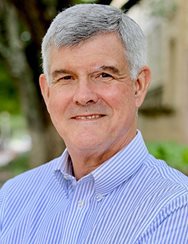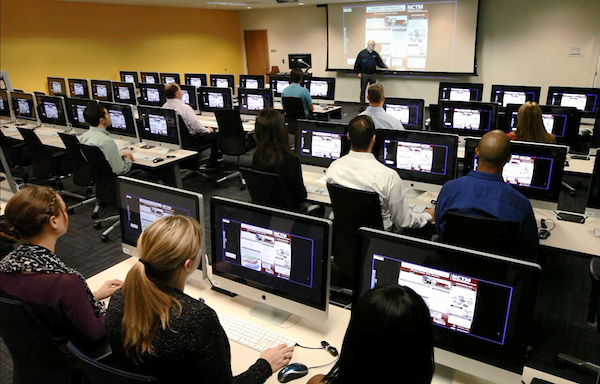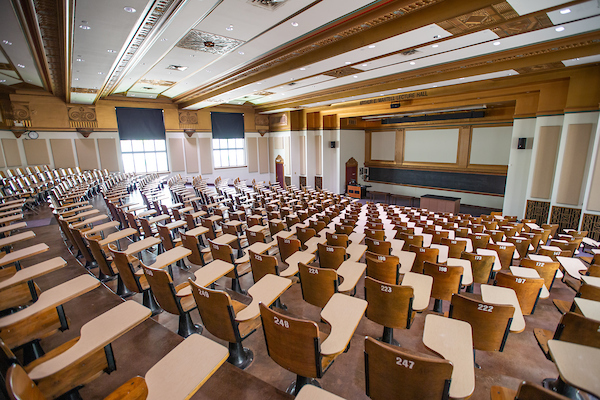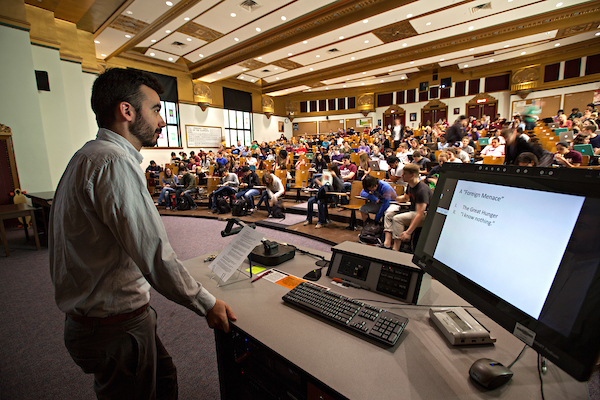Six scholars have earned the highest Texas A&M University faculty honor, University Distinguished Professor. The 2022 class includes faculty from the College of Science, College of Medicine, College of Engineering, and the College of Agriculture and Life Sciences.
The University Distinguished Professor designation identifies faculty members who are considered pre-eminent in their own field and have made at least one transformational contribution or substantial intellectual leap forward in their discipline. University Distinguished Professors retain their current title but add the new distinction.
These exceptional faculty members have stretched the boundaries of their fields, making transformational contributions in astro-physics, psychiatry, neuroscience, nanotechnology, environmental assessment, and protein biophysics. From changing the way post-traumatic stress disorder (PTSD) can be studied and treated, to introducing a law enabling more precise measurement of rates of change across the universe, these distinguished professors are leaving a legacy.

Robert KennicuttCollege of Science
Physics and Astronomy
Robert Kennicutt received his Ph.D. from the University of Washington in 1978. Before coming to Texas A&M in 2018, he held the Plumian Professorship of Astronomy & Experimental Philosophy at the University of Cambridge, a chair created in 1704 under the direction of Issac Newton. He previously served was as the Dean of the School of Physical Sciences and Director of the Institute of Astronomy at Cambridge.
Dr. Kennicutt is internationally known for his work in galaxy evolution over cosmic time and the precise measurement of the expansion of the Universe. The Kennicutt-Schmidt law is a fundamental empirical relationship used by astronomers worldwide to estimate the rate at which galaxies use their gas to form stars. The application of this law has allowed astronomers to measure the rate at which galaxies grow – and die – since 500 million years after the Big Bang. He also is one of the three astronomers who formed the Hubble Space Telescope "The H0 Key project," which has measured the most precise value of the expansion of the universe.
These discoveries have led to numerous significant awards: membership in the National Academy of Sciences, elected fellow of the Royal Society of London, the Royal Astronomical Society, the American Academy of Arts and Sciences, and the American Astronomical Society. In addition, he has been awarded the Gold Medal of the Royal Astronomical Society, the Gruber Prize in Cosmology, and the Dannie Heineman Prize in Astrophysics from the American Institute of Physics.

Israel Liberzon
College of Medicine
Department of Psychiatry and Behavioral Sciences
Israel Liberzon received his M.D. from Sackler Medical School, Tel Aviv University, Israel in 1986. He completed his clinical internship at Rambam Medical Center, Haifa, Israel (1987), and a Postdoctoral Fellowship in Physiology at Technion Israeli Institute of Technology (1988). He completed a Psychiatry Residency at the University of Michigan in 1992, and was appointed Assistant Professor of Psychiatry at the University of Michigan. He rose through the ranks to tenured Associated Professor and Professor and was named the Theophile Raphael Professor of Neuroscience in 2008. He was recruited as Professor and founding Head of the Department of Psychiatry and Behavioral Sciences in the College of Medicine at Texas A&M University in 2018.
Dr. Liberzon is a leading expert in the fields of fear, anxiety and Post-traumatic Stress Disorder (PTSD). He is one of the pioneers of the functional neuroimaging of stress, emotions and trauma, and his research elucidated several major brain and neuroendocrine mechanisms of stress and anxiety disorders, that have major implications in the understanding and treatment of PTSD. His work transformed the understanding of the roles of the hippocampus, hippocampal-prefrontal neurocircuits, and contextual processing in PTSD pathophysiology. To study these mechanisms, Dr. Liberzon developed the most widely used animal model of PTSD that led to more than 400 publications.
Dr. Liberzon has authored and co-authored more than 300 peer reviewed manuscripts that have been cited more than 37,000 times (H factor 91). Dr. Liberzon is a rare scientist and clinician, whose research bridges basic animal studies, clinical and translational research, and patient care.

George Pharr
College of Engineering
Department of Materials Science and Engineering
George M. Pharr received his Ph.D. in Materials Science and Engineering from Stanford (1979). He is the Erle Nye ’59 Chair I Professor in the Department of Materials Science and Engineering. He came to Texas A&M in 2017, recruited with a Chancellor’s Research Initiative and Governor’s University Research Initiative package to create a cluster of excellence in Nanomaterials Innovation.
Dr. Pharr is known as the father of the materials characterization technique called "nanoindentation." His election to the National Academy of Engineering in 2014 cited him for "development of methods for determining mechanical properties of materials by nanoindentation." He developed nanoindentation into an important materials characterization tool that powered the nanotechnology revolution and has been instrumental in the discovery of a variety of new materials for a wide range of applications, including semiconductors, magnetic storage, advanced optics, wear-resistant coatings, and microelectromechanical systems.
Dr. Pharr’s honors include the Materials Research Society's inaugural Innovation in Materials Characterization Award (2010) and the Nadai Medal (2018) from the American Society of Mechanical Engineers. Most recently, he received the William D. Nix Award (2021) from the Minerals, Metals, and Materials Society for development of nanoindentation and fundamental contributions in the field of contact mechanics. He is a Fellow of ASM International (1995), the Materials Research Society (2012), and the Minerals, Metals & Materials Society (2016). Active in his profession, he serves as an Associate Editor of the Journal of the American Ceramic Society since 1990 and Principal Editor of the Journal of Materials Research since 2012.

Farida Sohrabji
College of Medicine
Department of Neuroscience and Experimental Therapeutics
Farida Sohrabji obtained her Ph.D. from the University of Rochester (NY) in 1991, with post-doctoral training at Columbia University (NY). She was recruited to a faculty position at Texas A&M University in 1998, is a Regents Professor, and serves as Head of Neuroscience and Experimental Therapeutics.
Dr. Sohrabji directs a federally funded research program that focuses on the pathophysiology of ischemic stroke, a leading risk factor for Alzheimer’s Disease and related dementia; and developing novel treatments for this devastating disease. Her lab was the first to show that estrogen treatment to older acyclic females was not neuroprotective for stroke. These studies accurately anticipated the Women’s Health Initiative studies and set off a series of studies to identify stroke neuroprotectants that would be effective in this older female population. Subsequently, her lab is one of a small number of labs that has shown that stroke neuroprotectants may be effective in only one sex. In view of the translational failures in stroke, these findings are critical for the design of preclinical studies and underscores the importance of Sex as a Biological Variable.
Dr. Sohrabji is a Fellow of the American Heart Association (Stroke Council) and the International Behavioral Neuroscience Society, and an inaugural Texas A&M Presidential Impact Fellow. She is founder and Director of the Women’s Health in Neuroscience Program and a strong advocate for the inclusion of gender/sex differences in biomedical research.

Raghavan Srinivasan
College of Agriculture and Life Sciences
Department of Ecology and Conservation Biology
Dr. Raghavan Srinivasan completed his Ph.D. in Agricultural Engineering at Purdue University in 1992. Dr. Srinivasan joined Texas A&M as a full-faculty member in September 1999 and Director of the Spatial Sciences Laboratory, and he is now Resident Director of the Blackland Research and Extension Center.
Dr. Srinivasan's work focuses on scholarship and innovation in Spatial Decision Support Systems (SDSS). Over the course of his career, Dr. Srinivasan’s development of SDSS has fundamentally advanced the science of watershed hydrology assessment, natural resource management, GIS based environmental analyses and data-driven science-based decision making. He has fundamentally transformed the way researchers address watershed hydrology analyses, watershed management evaluation, GIS/database support for environmental analyses and hydrological analyses relevant to environmental policy.
Dr. Srinivasan was recently named as one of the top two most impactful scientists of the 30 in the world working in environmental assessment (determined via his h-index). As one of the most highly cited researchers in the world, Dr. Srinivasan has received four prestigious research awards from professional societies and four from universities across the world. At Texas A&M, he was named a Texas A&M AgriLife Research Faculty Fellow (2014), and he has received the AFS Distinguished Achievement Award in Research (2019), the Vice Chancellor’s Award in Excellence for International Involvement (2015), and the COALS Dean Award for Interdisciplinary Research (2014).

Josh Wand
College of Agriculture and Life Sciences
Department of Biochemistry and Biophysics
Andrew Joshua Wand earned his Ph.D. in Biophysics in 1984 from the University of Pennsylvania. He was recruited to Texas A&M University in the Department of Biochemistry & Biophysics as Head in 2019.
Dr. Wand is an acclaimed biophysicist whose research focuses on the fundamental nature of conformational dynamics of proteins. His primarily research tool is nuclear magnetic resonance (NMR). Dr. Wand’s major research emphasis is directed at understanding internal protein motion (entropy) and its influence on molecular recognition, allostery and catalysis. Dr. Wand has made two transformative contributions. First, he conceived of the “entropy meter” which, for the first time, enables NMR parameters associated with biological molecules to be directly scaled with entropy. This breakthrough introduced an entirely new perspective for studying protein-protein interactions. The second contribution was invention of “reverse micelles”, a strategy that allows lipid encapsulation of large protein molecules, dramatically enhancing NMR spectra and sensitivity. This achievement enables numerous innovations in protein biophysics, including a new paradigm for drug discovery.
Dr. Wand holds 5 patents and published more than 200 papers, book chapters and reviews, garnering more than 13,000 citations. He has served as Chair of the NIH Macromolecular Structure Function B Study Section and was selected as Chair of 2023 Gordon Research Conference on Proteins. Dr. Wand was elected Fellow of two prominent scientific societies: the American Physical Society and the Biophysical Society. Other achievements include the Arnold O. Beckman Research Award, the Gomberg Lecturer, and the H.H.J. Nesbitt Lecturer.
To learn more about the University Distinguished Professor award program, click here.



